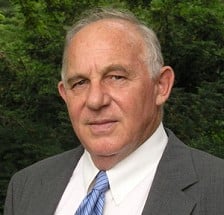Architects should plan now for better days ahead
.floatimg-left-hort { float:left; } .floatimg-left-caption-hort { float:left; margin-bottom:10px; width:300px; margin-right:10px; clear:left;} .floatimg-left-vert { float:left; margin-top:10px; margin-right:15px; width:200px;} .floatimg-left-caption-vert { float:left; margin-right:10px; margin-bottom:10px; font-size: 12px; width:200px;} .floatimg-right-hort { float:right; margin-top:10px; margin-left:10px; margin-bottom:10px; width: 300px;} .floatimg-right-caption-hort { float:left; margin-right:10px; margin-bottom:10px; width: 300px; font-size: 12px; } .floatimg-right-vert { float:right; margin-top:10px; margin-left:10px; margin-bottom:10px; width: 200px;} .floatimg-right-caption-vert { float:left; margin-right:10px; margin-bottom:10px; width: 200px; font-size: 12px; } .floatimgright-sidebar { float:right; margin-top:10px; margin-left:10px; margin-bottom:10px; width: 200px; border-top-style: double; border-top-color: black; border-bottom-style: double; border-bottom-color: black;} .floatimgright-sidebar p { line-height: 115%; text-indent: 10px; } .floatimgright-sidebar h4 { font-variant:small-caps; } .pullquote { float:right; margin-top:10px; margin-left:10px; margin-bottom:10px; width: 150px; background: url(http://www.dmbusinessdaily.com/DAILY/editorial/extras/closequote.gif) no-repeat bottom right !important ; line-height: 150%; font-size: 125%; border-top: 1px solid; border-bottom: 1px solid;} .floatvidleft { float:left; margin-bottom:10px; width:325px; margin-right:10px; clear:left;} .floatvidright { float:right; margin-bottom:10px; width:325px; margin-right:10px; clear:left;}
The economic recovery will turn the tables on construction activity, with commercial jobs bobbing to the top of the heap by 2012, an economist told architects last week in Des Moines.
James Haughey, chief economist for Norcross, Ga.-based Reed Construction Data Inc., said the turnaround means that architects should start sharpening their pencils now for projects that will launch later this year and through 2011.
With the economy in full recovery mode, “you should be in a much better position by the end of the year … in terms of income and employment,” he said.
Haughey joined other speakers during the annual spring meeting of the Iowa chapter of the American Institute of Architects. The meeting focused on the challenges presented by a weak economy as well as opportunities for the construction and design industry as the state emerges from recession.
Iowa architects have not suffered the severe blows that have struck much of the country, with the recession being less severe here than in other states, including neighboring states Illinois and Missouri.
Nationally, firms have reduced their staffs by 20 to 40 percent, but that trend has not materialized in Greater Des Moines, where firms have reported holding salaries and bonuses in check, but few have reported large layoffs and some are making plans to hire.
However, because the state is less prone to boom-and-bust cycles, it probably will be slower to realize the full effect of a robust economy, Haughey said.
Growth in the economy is slowly “sucking up the surplus in building space,” Haughey said. Evidence of that can be seen in an increase in permits for single-family housing, despite a glut of unfinished homes that were left on the market in the form of frames or simply foundations when the housing market crashed in 2007 and 2008, he said.
Nationally, the value of commercial construction is expected to decline 8 percent again this year, moderating declines in 2008 and 2009, but is expected to increase 7.4 percent in 2011, Haughey said. Commercial construction is on track to be worth $900 billion this year, down from $1.15 trillion in 2007.
He noted that there was “unrealistic euphoria” in the office and retail markets in 2008, with designers and builders generating new construction that could not be absorbed. However, that surplus was not on the same scale as what was generated during recessions in 1990-91 and early in this decade.
“Architects were the last to hear about the recession,” he said.
Haughey said hotel construction surged by 30,000 new rooms two years ago, even though demand for those rooms was in decline due to the collapsing economy.
Even hotel construction, along with other commercial projects, should see some expansion in the next two years.
“By the end of 2011, you should get to the point where you are not worried about where the next customer is coming from,” he said.
To date, the strongest construction markets in the state have been in manufacturing, multifamily housing, public safety, nursing homes and water and sewer treatment plants, Haughey said. Retail and highway construction has shown some improvement, with office buildings being the weak link in private sector construction.
Haughey also noted that federal economic recovery spending was front loaded with highway repair projects, but the sector will see a drop-off in funding.
Nonetheless, federal funds will “trickle” through the economy for at least another two years. “The stimulus bill has a lot of money for federal courthouses,” he said.
The boom in construction of health facilities also will drop off, due in large part to federal health reform legislation, Haughey predicted.
“Health care managers are not sure whether to build,” he said.
With the exception of construction at colleges and universities, spending on school buildings will suffer because of their reliance on property tax revenues, Haughey said.
Increased construction activity should be spurred by a gradual thaw in credit markets, Haughey said, adding that there is some evidence that lenders are more willing than just a few months ago to extend loans that are coming due. He said a surplus of investment money that has been “sitting on the sidelines” and is beginning to reappear in the commercial mortgage markets.
Haughey was so upbeat on the prospects for a steady, if slow, recovery that he told the architects there was little to stop the turnaround.
“We’ll get to a point three or four years from now where everything is great,” he said.








